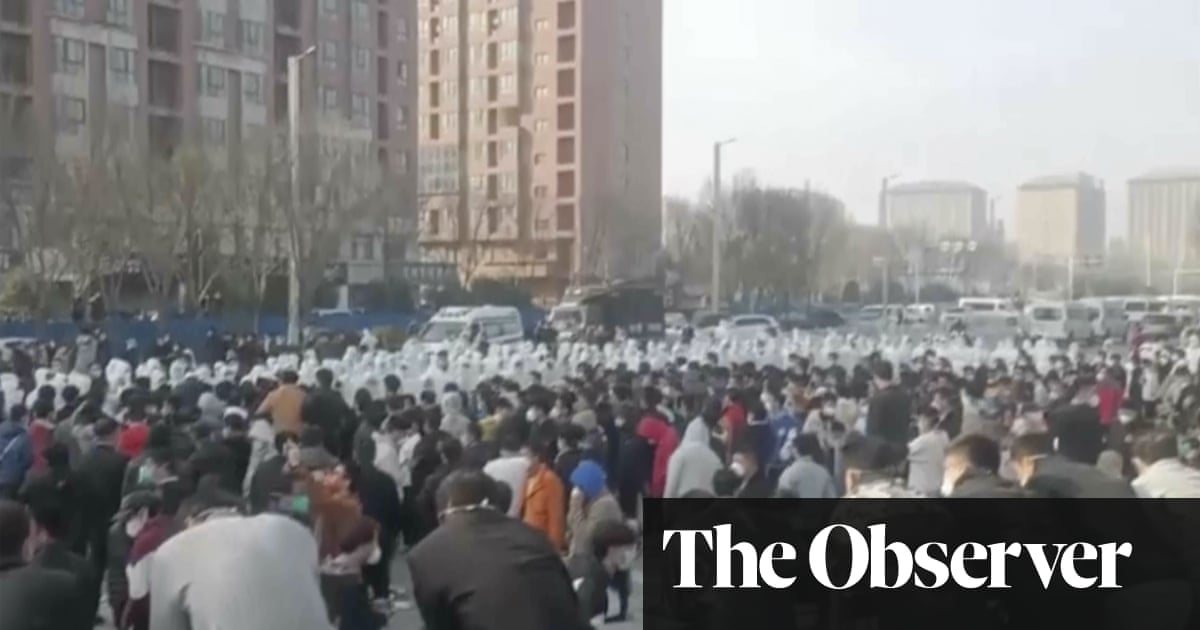
Protests in China are often small- scale. On 17 May, a handful of workers at an air-purifier factory in Xiamen, a coastal city in Fujian province, south-east China, gathered to demand the payment of wages that, they said, were in arrears. The protest was quiet, but it was one of nearly 30 similar demonstrations this month alone.
With China’s factories reopened and draconian coronavirus measures abandoned, workers are also going on strike at a remarkable rate.
This year in China there have already been at least 130 factory strikes, more than triple the number in the whole of 2022, according to data compiled by the China Labour Bulletin (CLB), a Hong Kong-based non-governmental organisation.
The CLB’s database is far from comprehensive – by its own estimate, it captures about 5%-10% of all incidents of collective action in China. But in the absence of any official statistics, the CLB provides a snapshot of the disputes and negotiations that are happening across the country.
And this year, China seems to be entering a “new era” of post-Covid factory strikes, said Eli Friedman, a professor at the school of industrial and labour relations at Cornell University in New York.
For most of the strikes, the root cause is money. Although China’s economy is gradually recovering from the battering it took during three years of strict zero-Covid measures, factories are still struggling. And the worsening political relations between the US and China are starting to make themselves felt in the economy. In a monthly government survey of 3,000 factories across China, all 13 indicators of economic activity – including new orders and prices – declined in April.
With money tight, many factories have resorted to not paying workers, paying them late or finding ways to lay them off without paying severance, such as by relocating to somewhere impossible for the workers to travel for employment.
China may be an authoritarian state, but protests against company bosses are commonplace. Although there was a dip in such incidents during the pandemic, small, isolated incidents about specific issues – typically non-payment of wages – are ubiquitous on the factory floors and construction sites that power the country’s, and the world’s, economy.
Last year, hundreds of workers at the Foxconn technology group’s Apple iPhone factory in Zhengzhou in Henan province clashed with police after unruly protests over delays to bonus payments.
The scale of those demonstrations, and the fact that they came as the country swelled with frustration at the pandemic restrictions, attracted widespread attention on social media. But usually the incidents are contained and lack any connection to a broader workers’ movement.
A paradox at the heart of the communist regime is that the party of workers does not tolerate independent unions.
“That’s as much of an irony as a communist system that embraces consumerism,” said Jeffrey Wasserstrom, a professor of Chinese history at the University of California, Irvine.All workers in China have the right to join a trade union, but that union must be affiliated with the All-China Federation of Trade Unions (ACFTU), a government body. That results in “zero trust” between workers and unions, said Friedman. The ACFTU is, he added, a “complete non-factor in people’s lives”.
Some might have expected the workers’ movement in China to develop differently. In the 1990s, as China prepared to join the World Trade Organization in 2001, the government started to introduce laws to protect workers’ rights.
This culminated in the labour contract law in 2008, which entitled workers to a written contract and severance pay. But, as in many other countries, employers soon found ways around these obligations.
After 2008, “more factories hired temp workers or agency workers – they found a lot of different ways to evade responsibility,” said Aidan Chau, a researcher at the CLB.
Fewer than half of migrant workers – the people who move to the cities to take low-paid factory and construction jobs – have the written employment contracts that they are entitled to.
Another group of workers who suffer from a lack of formal contracts are those in the gig economy.
In April, hundreds of delivery drivers for Meituan, one of China’s two main food delivery platforms, went on strike in Shanwei, a city in Guangdong province, over poor pay and being pressured to drive in dangerous, rainy conditions.
The action was surprising in the number of workers they managed to organise, and in the fact that they attracted support from drivers across the country, as well as consumers.
In the post-pandemic era, the collective action was “remarkable”, said Chau, especially after Chen Guojiang, a food delivery worker, was arrested in Beijing in 2021 for making similar complaints. That “sent a signal to the workers”, said Chau.
Wasserstrom added: “Strikes sometimes get small wins to get people back to work, but sometimes small concessions are made and the organisers are punished.”
But in last month’s Meituan strike, the company seemed to back down, meeting several of the workers. The public sympathy for the drivers helped their case, according to Chau. But anyone hoping to agitate for bigger demands will be cautious: Chen posted a video on his WeChat account in 2022 in which he appeared to have been released, but he has stopped talking about strikes.
"Factory" - Google News
May 21, 2023 at 03:00PM
https://ift.tt/Ei46vrW
Surge in strikes at Chinese factories after Covid rules end - The Guardian
"Factory" - Google News
https://ift.tt/dhqWM8Q
Shoes Man Tutorial
Pos News Update
Meme Update
Korean Entertainment News
Japan News Update
Bagikan Berita Ini















0 Response to "Surge in strikes at Chinese factories after Covid rules end - The Guardian"
Post a Comment